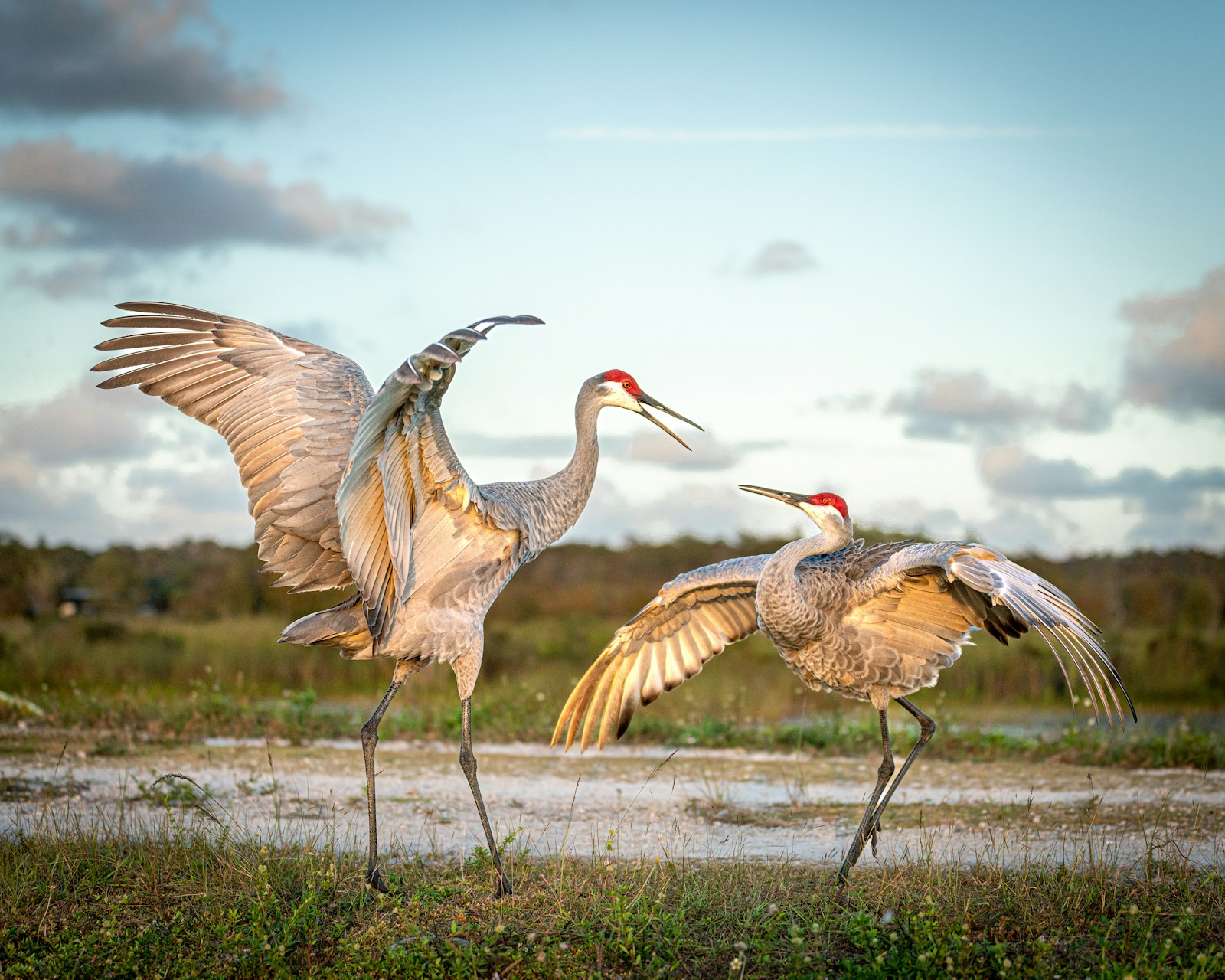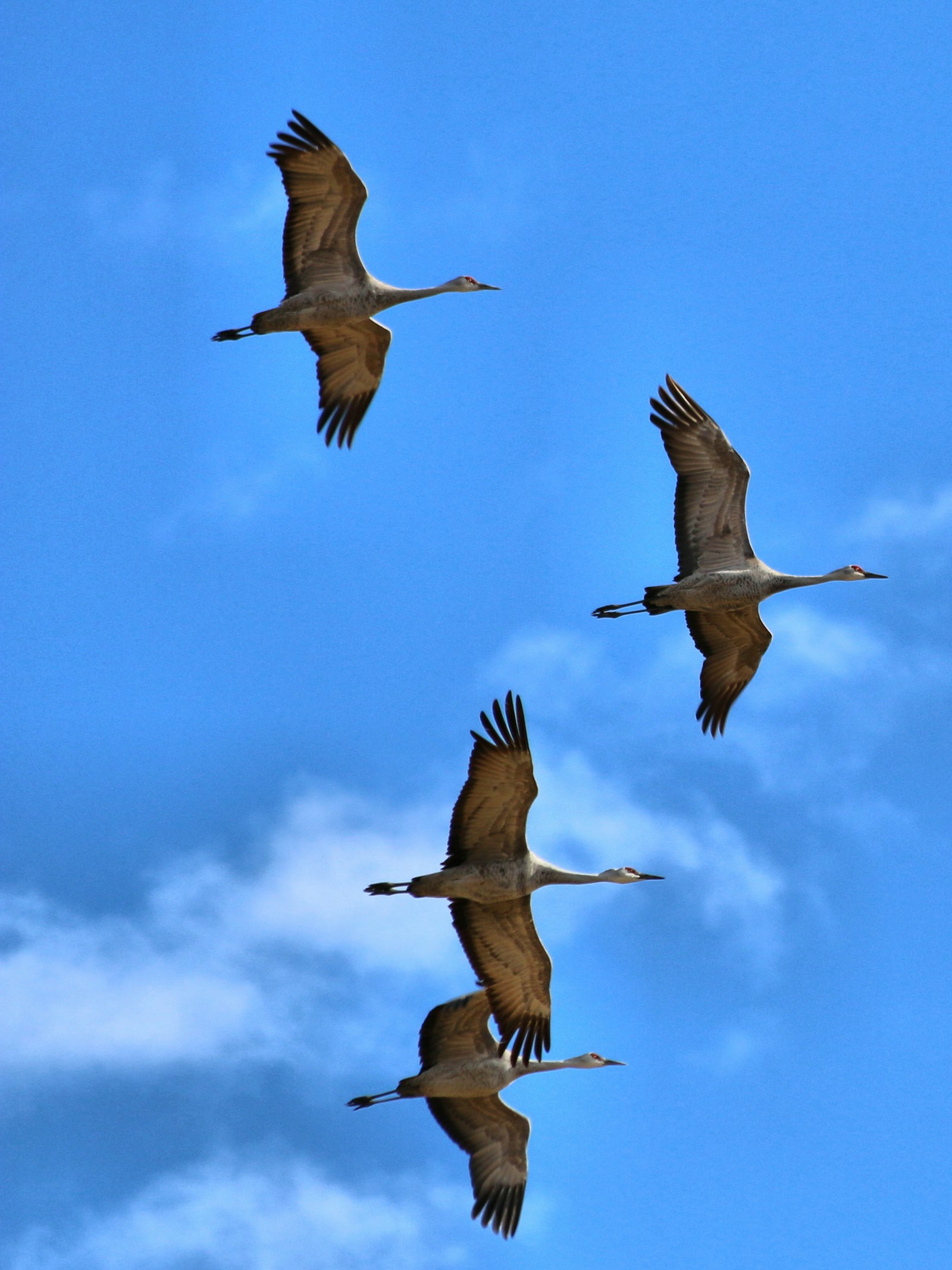Living in the foothills of Alberta offers a front-row seat to one of nature's most elegant performances—the seasonal presence of the sandhill crane. These statuesque birds, with their graceful movements and resonant calls, add a touch of the prehistoric to our modern landscapes.
The first time I heard them and saw their size, I immediately thought of Terradactyls. Their prehistoric calls echoed throughout the valley. Now, they are a sign of spring and one of my favorite sounds in the morning. I special sound that many in Alberta have never heard. Buying an acreage is truly life-changing.
Sandhill cranes are renowned for their distinctive, resonant calls that echo across their habitats. These loud, rattling bugle calls can last a couple of seconds and are often strung together, audible up to 2.5 miles away. They serve various purposes, including communication between mates and signaling alarm. All About Birds
Majestic Residents of Alberta
Sandhill cranes are notable for their impressive stature, standing between 80 to 120 centimeters tall, with a wingspan stretching up to 200 centimeters. Their slate-gray plumage is accented by a striking red forehead and white cheeks, making them unmistakable against the backdrop of Alberta's diverse terrains.
Habitat and Distribution
In Alberta, these cranes favor wetlands, marshes, and grasslands, particularly during their breeding season. Areas such as the Peace-Athabasca Delta and the wetlands surrounding the Bow River become bustling nurseries each spring. Their preference for these habitats is due to the abundant food supply and the seclusion necessary for raising their young.
A Culinary Palette
Sandhill cranes are omnivorous, exhibiting a diverse diet that includes grains, berries, small mammals, insects, snails, reptiles, and amphibians. This varied menu allows them to adapt to different environments, from the cultivated fields of southern Alberta to the untamed northern wetlands.
Seasonal Journeys
As autumn's chill sets in, sandhill cranes embark on their migration to warmer climes, traveling to regions in the southern United States and Mexico. Their migratory flocks, sometimes numbering in the thousands, are a spectacle to behold, filling the skies with their synchronized flight formations and echoing calls.

Courtship and Family Life
The courtship dance of the sandhill crane is a mesmerizing display of bows, leaps, and wing flutters, strengthening the bonds between mates. Once paired, they collaborate to build nests in secluded wetland areas, where the female typically lays two eggs. Both parents share incubation duties, and upon hatching, the chicks are precocial, venturing from the nest within hours, ready to explore their new world.
Vulnerable Yet Resilient
Despite their size, sandhill cranes face threats from predators such as foxes, coyotes, and birds of prey, particularly during their vulnerable nesting period. Human activities, including habitat destruction and hunting, have also impacted their populations. However, conservation efforts and legal protections have facilitated a remarkable recovery in many areas.

A Living Link to the Past
With fossil records dating back over two million years, sandhill cranes are among the oldest known bird species still in existence. Their enduring presence serves as a living connection to the Earth's distant past, a testament to their adaptability and resilience.
An Invitation to Observe
For residents of Alberta's foothills, the arrival and departure of sandhill cranes mark the changing seasons. Observing these birds in their natural habitat offers a profound appreciation for the intricate balance of nature and the importance of preserving these environments for generations to come.
In essence, the sandhill crane embodies the wild spirit of Alberta's landscapes—a symbol of grace, endurance, and the timeless dance of nature.
Rural life in Alberta gives you more than you expect; buying an acreage and living a rural life opens up a new world of discovery.



